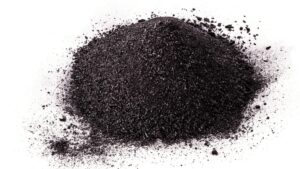Lithium Energy drilling to increase confidence in Burke graphite resource

Picture: Getty Images
Lithium Energy has started development drilling aimed at upgrading the resource confidence of its Burke graphite deposit in North Central Queensland.
The drill program of 20 reverse circulation holes totalling 2,000m and six diamond core holes totalling about 600m will seek to move the current Inferred Resource of 6.3Mt grading 16% total graphitic content into the higher confidence Indicated category.
Additionally, core samples from the diamond holes will provide Lithium Energy (ASX:LEL) with graphite material for further metallurgical and anode optimisation test work, to support metallurgical flowsheet and Purified Spherical Graphite (PSG) development.
Results from the drilling and testwork program will also be used to support an Engineering Study for an anode manufacturing facility based in Queensland, to produce high value PSG material for use in lithium-ion batteries.
The company has also received all environmental and heritage and cultural permits and approvals to undertake drilling at the Corella Tenement.
Once the Burke tenement drilling is done – expected in January 2023, the rig will move to Corella to test the extent of graphite mineralisation identified through previously conducted sampling and EM surveys.
Burke graphite project
Burke consists of the Burke and Corella tenements covering about 26km in Queensland’s Cloncurry region which have ready access to well-developed transport infrastructure including an airport at Mt Isa (about 122km away).
The Burke tenement is adjacent to Novonix’s Mt Dromedary graphite project and has a resource of 6.3Mt at 16% TGC for 1Mt of contained graphite – including a higher grade zone with a resource of 2.3Mt at 20.6% TGC for 464,000t of contained graphite.
Graphite from the deposit has been demonstrated to be able to be processed by standard flotation technology to international benchmark product categories with flotation testing producing a concentrate of purity in excess of 95% and up to 99% TGC.
Graphene nano platelets can also be readily extracted from this material through the use of relatively low cost and environmentally friendly Electrochemical Exfoliation (ECE).
This and the high grade of the deposit indicates its potential suitability for use in lithium-ion batteries.
Meanwhile, an electromagnetic survey carried out over outcropping and sub-cropping Geological Survey of Queensland mapped Graphitic Schists – the “Milo beds” – at the Corella tenement highlighted an area of about 1,000m by 500m within which conductive features similar to those corresponding to high-grade graphite occurring at the Burke Tenement were identified.
This article was developed in collaboration with Lithium Energy, a Stockhead advertiser at the time of publishing.
This article does not constitute financial product advice. You should consider obtaining independent advice before making any financial decisions.
Related Topics

UNLOCK INSIGHTS
Discover the untold stories of emerging ASX stocks.
Daily news and expert analysis, it's free to subscribe.
By proceeding, you confirm you understand that we handle personal information in accordance with our Privacy Policy.








